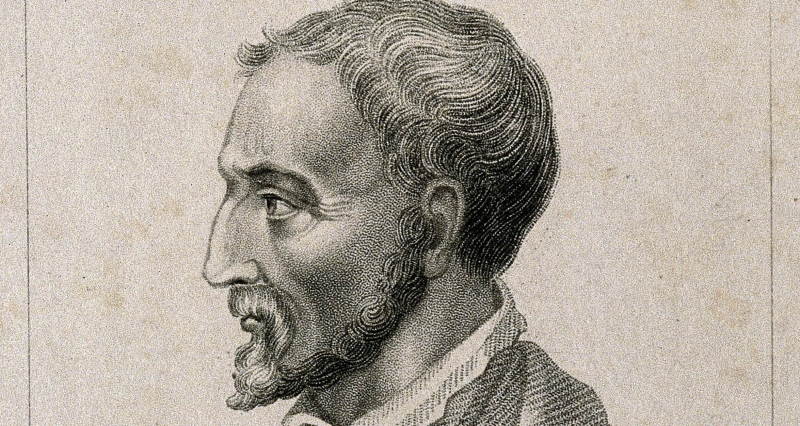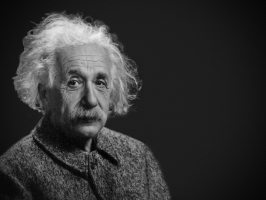Top 6 Most Famous Mathematicians of All Time
All of us have learnt Math during our school years, but do you know anything about the famous mathematicians that have set the foundation stone for this ... read more...interesting subject? In this article, Toplist will introduce to you some of the most famous mathematicians of all time.
-
Pythagoras, one of the most famous mathematicians of all time, was an ancient Greek philosopher from Ionia and the founder of Pythagoreanism. His political and theological beliefs were well-known in Southern Greece and also affected the views of Aristotle, Plato, and the West as a whole. There's not much we know about his life, although it is believed that he was the child of Mnesarchus - who is a gem-engraver on Samos Island.
Modern researchers still argue about Pythagoras's schooling and educational background. Still, they do believe that he traveled to Croton in Italy around 530 B.C., where he established a college in which members were pledged to secret and lived a collaborative and austere existence. This lifestyle required a variety of dietary constraints, including vegetarianism, but current academics doubt he actually promoted vegetarianism in its entirety.
The doctrine most reliably attributed to Pythagoras is the metempsychosis - or "transmigration of souls" - which claims that every soul has immortality and enters a new body at death.He may have also created the Musica Universalis concept, which states that the planets work according to mathematical calculations - and hence - resonate to make an inaudible symphony. Scholars can still not reach an agreement upon whether Pythagoras himself established the numerical and musical teachings ascribed to him - or if his subsequent disciples, like Philolaus of Croton, developed those ideas.
Following Croton's victorious victory against Sybaris in around 510 B.C, Pythagoras's adherents clashed with democratic sympathizers; as a result, Pythagorean meeting halls were torched. It's still unconfirmed whether Pythagoras eventually encountered his death as a result of this persecution, or fled to Metapontum and passed away there.
Born: c. 570 BC
Age: 75
Notable ideas: Communalism, Musica Universalis, Metempsychosis

Source: The Daily Beast 
Source: Goatchrist -
Hypatia, ranking second on our list of the most famous mathematicians of all time, was a philosopher and mathematician who resided in Alexandria, Egypt, which was a part of the Roman Empire at the time. She was an influential philosopher at Alexandria, where she taught astronomy and philosophy to many people.
Although Pandrosion - another female mathematician - came before her, Hypatia is the very first female mathematician with a well-documented life. Hypatia was known in her own day as an outstanding educator and sage advisor. She also wrote a critique on the Apollonius of Perga's dissertation on conics, which, unfortunately, has been lost. According to the title of her dad Theon's comments on Book III of the Almagest, many contemporary academics also assume that Hypatia might have revised the remaining text of Ptolemy's Almagest.
According to ancient records, Hypatia was admired by both pagans and Christians, and she had considerable influence among the political elite of Alexandria. Hypatia even counseled Orestes, the Roman governor of Alexandria - who'd been embroiled in a political dispute with Cyril, the archbishop of Alexandria - at the end of her life. Sadly, in March 415 A.D, a crowd of Christians headed by a lector called Peter killed her when rumors circulated that she had prevented Orestes from reuniting with Cyril.
Born: c. 350–370 AD
Age: 45-65
Notable ideas: Astrolabes, Hydrometers

Source: Egyptian Streets 
Source: World History Encyclopedia -
Gerolamo Cardano was an Italian multidisciplinary whose passions and skills included mathematician, physicist, astrologer, astronomer, philosopher, author, and gambler. He was one of the most prominent Renaissance mathematicians, as well as a significant player in the development of probability. Cardano was also the first Westerner to introduce the binomial values and the binomial theorem, having authored more than 200 scientific papers.
On another note, Gerolamo Cardano partially created and characterized a number of mechanical devices - such as the lock system, the gimbal composed of three concentric circles that allow a supported gyro or accelerometer to move easily; and the Cardan rod with ball bearings, which enable the transmission of rotational movement at different angles and is still used in vehicles today.
His contributions to hypocycloids were published in 1570 in De Proportionibus and extremely well-received by the general public. The generating rings of such hypocycloids were afterwards referred to as "Cardano spheres" or "Cardanic cycles" and were utilized to produce the first high-performance printing technology.
Today, he is more famous to the modern audience for his accomplishments in algebra. In his work Ars Magna, published in 1545, he introduced the first methodical use of negative values in Europe, published the resolutions of other scientists for quadratic and cubic equations with credit, and recognized the reality of imaginary numbers.
Born: 1501
Age: 74
Notable ideas: Cardano–Tartaglia formula, Negative numbers’ systematic usage

Source: The 100 Greatest Scientists 
Source: Interintellect -
Leonhard Euler was a Swiss polymath, physicist, astronomer, geologist, logician, and engineer who formed the studies of graphs and topology. He also made groundbreaking and influential breakthroughs in numerous other areas of mathematics, including analytic arithmetic, analytic techniques, and infinitesimal discrete mathematics. Euler established a better portion of the language and notation of contemporary mathematics, including the concept of a mathematical equation. His contributions to mechanics, hydrodynamics, optics, astronomy, and music theory are also well-known.
Leonhard Euler is regarded as one of history's finest mathematicians and the best of the eighteenth century. The effect of Euler on mathematics is expressed by a quote ascribed to Pierre-Simon Laplace: "Read Euler, he is the lord of us all." In the same vein, Carl Friedrich Gauss stated, "The examination of Euler's writings will continue to be the finest school for the many disciplines of mathematics, and there will be nothing that can replace it." His more than 850 writings are compiled in 92 quarto volumes (including his Opera Omnia), more than any other individual. Additionally, Euler was the first developer of graph theory (in part as a solution to the Bridge of Königsberg math question).
Last but not least, to simplify the explanation of the movement of solid things, Euler recast Newton's physics rules into new regulations in his two-volume book Mechanica. He has made significant contributions to the research of the elasticity of solid object deformations, elevating himself to the class of legendary mathematicians.
Born: 1707
Age: 76
Notable ideas: F(x) functions, Pi, eiπ + 1 = 0

Source: Biography.com 
Source: Cantor's Paradise -
Carl Friedrich Gauss was a German mathematician that made important contributions to several branches of mathematics and science. Regularly alluded to as the Cognomen mathematics Gauss, he is known as "the greatest thinker since antiquity" and "the greatest thinker since antiquity".
Gauss was a fervent perfectionist and a tireless worker. He was never an ambitious author, refusing to publish anything he did not deem to be flawless and above reproach. This conformed to his own credo, "pauca sed matura" (translated as "few, but ripe").
His personal journals reveal that he discovered a number of key mathematics findings decades before his colleagues published them. Eric Temple Bell, a Scottish-American mathematician and author, said that Gauss would have made the entire mathematics field advance by fifty years if he had published all his findings on time.
Carl Friedrich Gauss was reputed to absolutely dislike teaching, but he did accept a few pupils. Supposedly, he only attended one scientific meeting, which took place in Berlin in 1829. Several of his pupils went on to become important mathematicians, including Bernhard Riemann and Richard Dedekind.
Gauss made significant contributions to pure mathematics with his 1802 journal Disquisitiones Arithmeticae, which presented the triple bar emblem for congruency. Later on, he used it in a clear presentation of modulo, enclosed the first two verifiable evidence of the law of non-linear reciprocity, and devised the hypotheses of ternary and binary quadratic shapes.
Born: 1777
Age: 77
Notable ideas: Cyclotomic formula, Gaussian elimination

Source: Vedic Math School 
Source: Youtube -
Georg Cantor was a mathematician from Germany. He was instrumental in the development of formal logic, which has evolved into a basic mathematical theory. Cantor demonstrated the significance of the one-to-one connection between the members of two different sets, established infinite and well-ordered pairs, and showcased that real numbers are more frequent than natural numbers. But in fact, the way Cantor proved this theorem presupposes the presence of an "infinity of infinities". He defined ordinal and cardinal numbers as well as their associated arithmetic.
Cantor's idea of transfinite integers was first considered counterintuitive and even startling. Some Christian theologians (especially neo-Scholastics) saw his work as a threat to the singularity of the absolute infinite in God's nature; in one instance, they equated the idea of transfinite figures with pantheism, which Cantor vehemently refuted. Leopold Kronecker's public criticism and personal assaults on Cantor included calling him a "scientific charlatan," a "renegade," and a "youth-corrupter." Wittgenstein, writing years after Cantor's death, bemoaned that mathematics is "riddled with the toxic idioms of set theory," which he derided as "total gibberish" that is "laughable" and "incorrect."
Still, not all theologians opposed Cantor's idea; notable neo-scholastic scholar Constantin Gutberlet supported it, and Cardinal Franzelin acknowledged it as a credible theory.
Georg Cantor's recurrent bouts of despair from 1884 to the last few years of his life have exclusively been attributed to the hostility of his contemporaries. On the other hand, some other scholars have interpreted these periods as likely signs of bipolar illness.
Born: 1845
Age: 72
Notable ideas: Set theory

Source: BBVA Openmind 
Source: Jorgen Veisdal



























